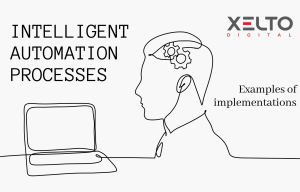Example from the medical industry – how to start automation? 👨⚕️ 🤖
The intricacies of managing with healthcare present a constant challenge in the quest to provide optimal patient care. A significant obstacle is the administrative burden that is often placed on doctors and medical staff. 😓🏥
To ensure timely care for patients, one medical company accelerated complex administrative tasks by redesigning its business processes with automation as the core. 🚀⚙️
They stressed that care is time-dependent, so any delays can affect patient outcomes. They noted the increasing amount of documentation needed and identified it as a bottleneck to good quality treatment. 🕒📑
With a large number of different medical professionals, such automation required a lot of work. First of all, it involved standardizing workflows. 💼🤝
A team was set up to work with the health care teams to best understand their responsibilities and sequence of work activities. 👥👨⚕️👩⚕️
“Instead of starting with automation, we started with the business process,” he says. – explains the chief information and digital officer, “We started by working with the right stakeholders so we could actually define the right problem. A good culture of collaboration and communication in our institution proved to be key.” 💡💻💪
By implementing automation, the company has achieved significant benefits. Time has been reduced and the administrative burden has been reduced, allowing medical staff to focus on providing excellent patient care. Obstacles such as documentation delays have been effectively overcome, and work efficiency has improved significantly.
Processes such as documentation processing and report generation can be performed quickly, accurately and without errors by RPA robots. 📈🤖💼
This successful automation implementation demonstrates that the right approach, incorporating collaboration between teams and a focus on business processes, is key to digital transformation. 💯🤝🔑
Contact us to discover how we can help bring automation to your business!






